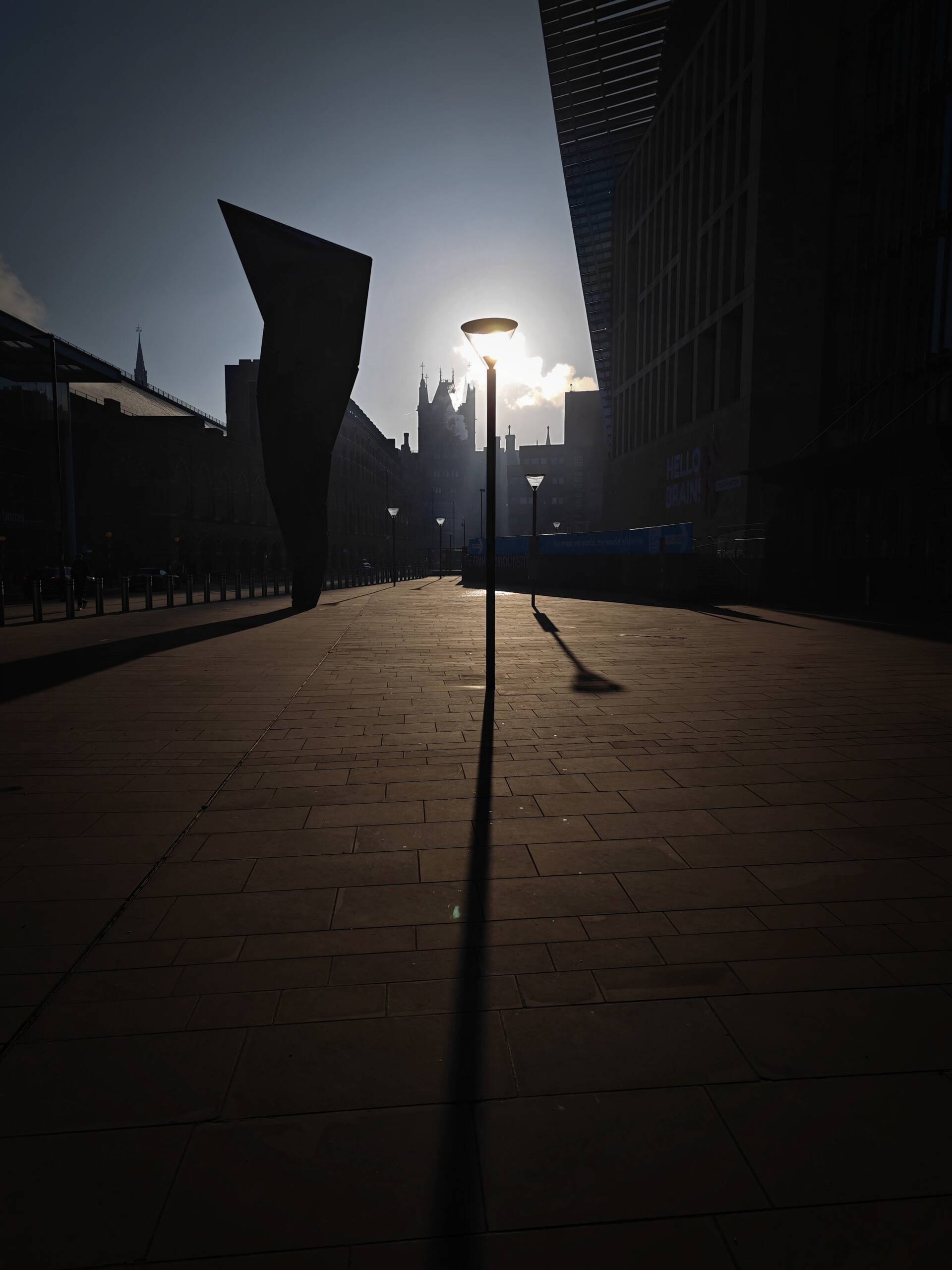
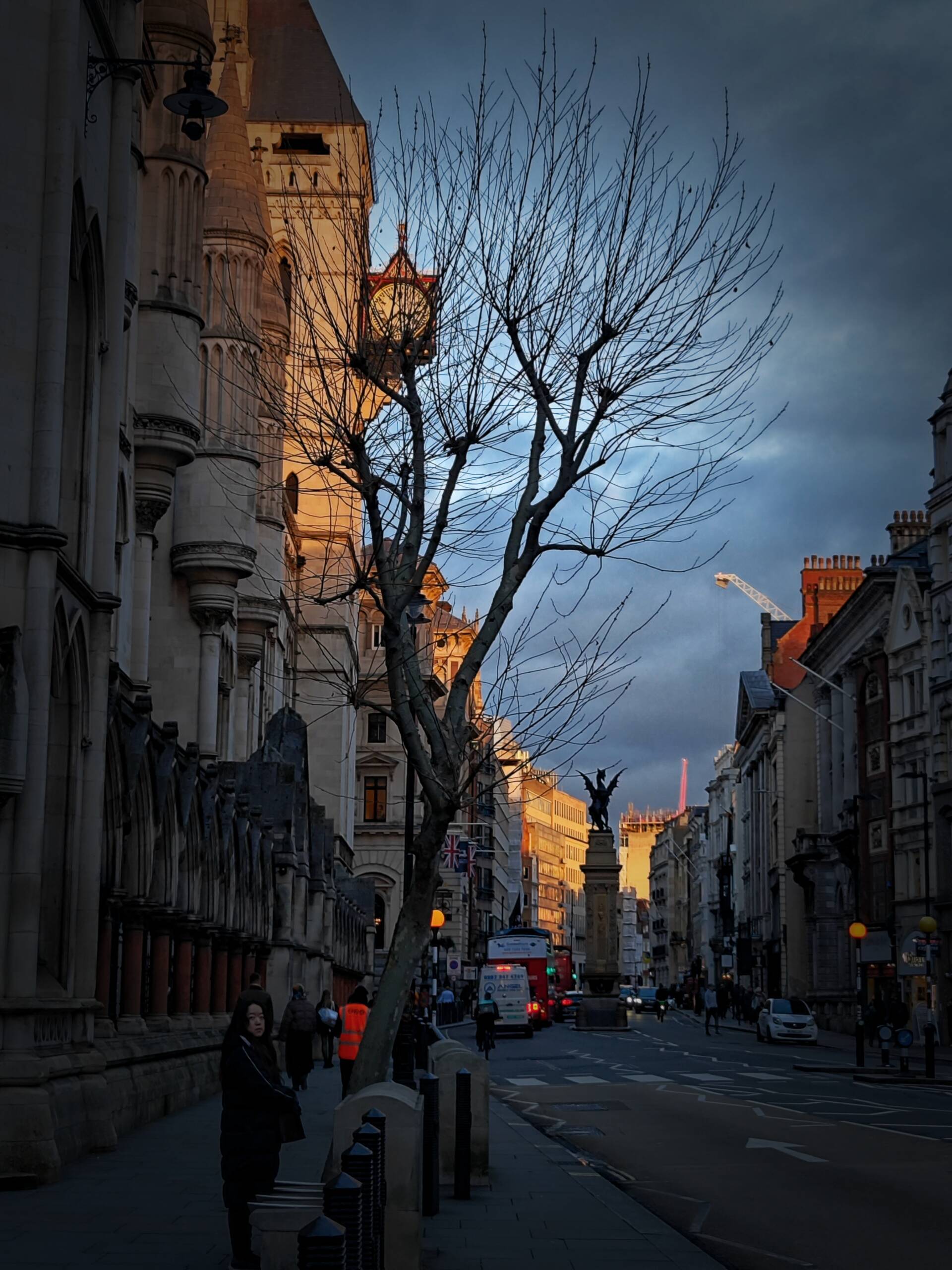
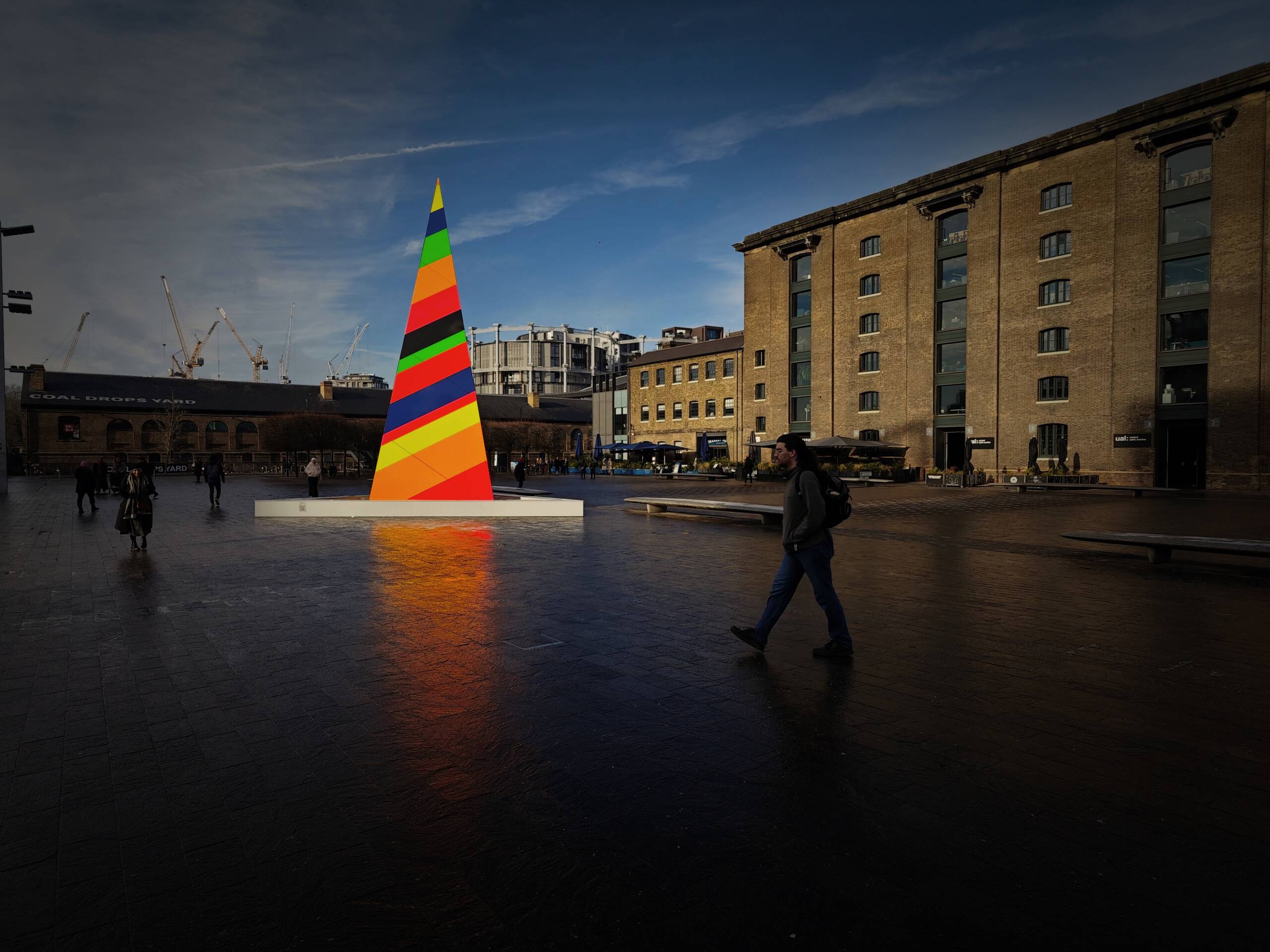
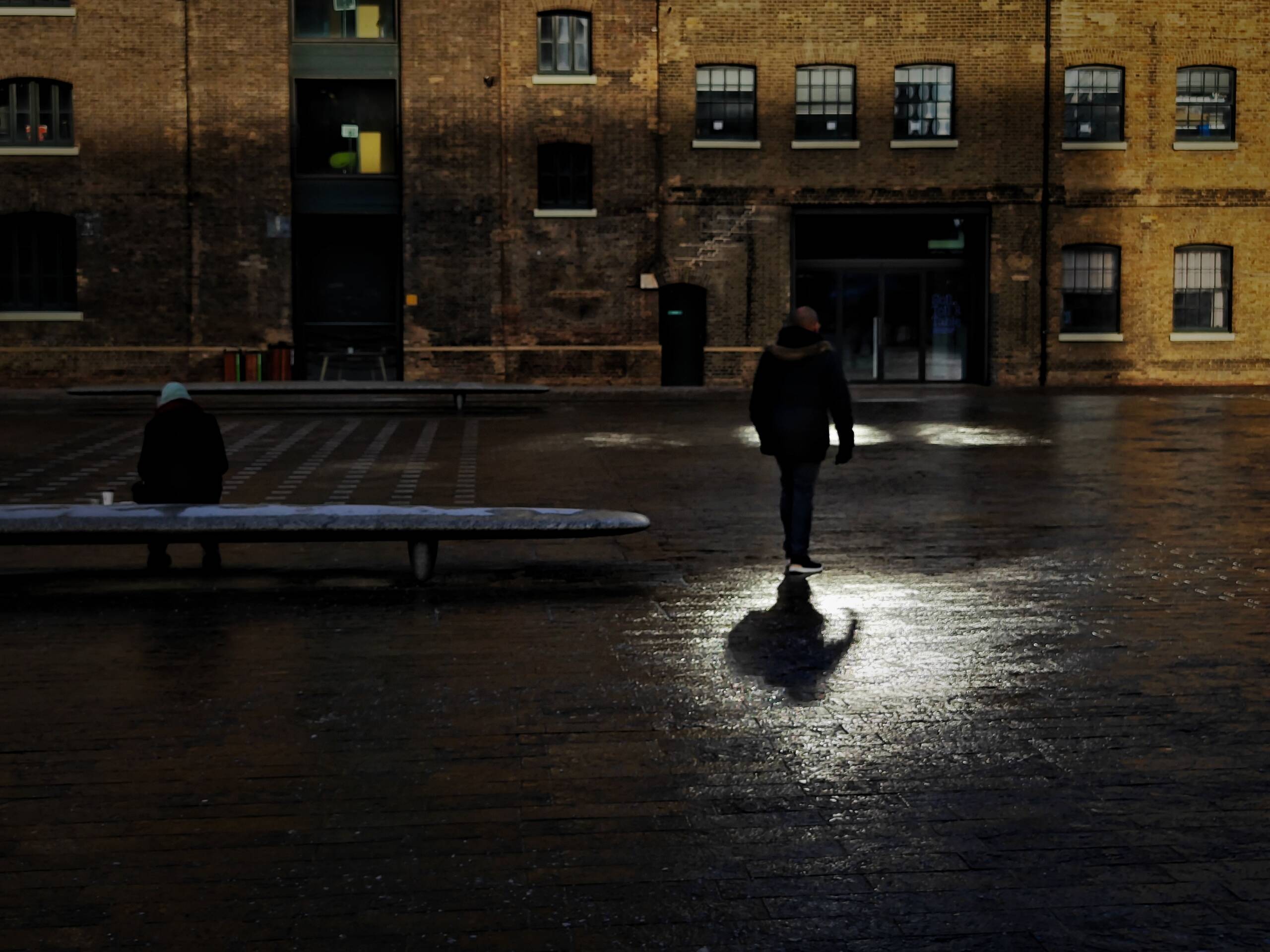 这是一段时间以来伦敦难得见到的好天气,即使阳光灿烂,气温依然很低。伦敦正在经历15年来最低气温的考验。如此寒冷的天气,大街上依然游人如织,餐厅里客满为患,看不如英国经济停滞不前的任何征兆。当然,这也许这是表面。在这座建筑前后,就是国王十字(King’s Croass),以前的烂区,吸毒贩毒、站街女随处可见、肮脏危险,警匪之战随处可见。经过多年努力,这里成为传统和现代结合的典范,过去的火车站售票厅,仓库和货物堆放点如今成为高端消费场所。附近一家印度餐厅的订位竟然需要提前2个多月,还不能保证是否能订到。
这是一段时间以来伦敦难得见到的好天气,即使阳光灿烂,气温依然很低。伦敦正在经历15年来最低气温的考验。如此寒冷的天气,大街上依然游人如织,餐厅里客满为患,看不如英国经济停滞不前的任何征兆。当然,这也许这是表面。在这座建筑前后,就是国王十字(King’s Croass),以前的烂区,吸毒贩毒、站街女随处可见、肮脏危险,警匪之战随处可见。经过多年努力,这里成为传统和现代结合的典范,过去的火车站售票厅,仓库和货物堆放点如今成为高端消费场所。附近一家印度餐厅的订位竟然需要提前2个多月,还不能保证是否能订到。
分类目录归档:travel
梦境无边Dreams Without Borders
图像
梦境无边(2017年拍摄于纳米比亚苏索斯维利沙漠谷地中的“死亡谷”)
“Dreams Without Borders” (Filmed in 2017 in the “Valley of Death” in the Sossusvlei Desert, Namibia)
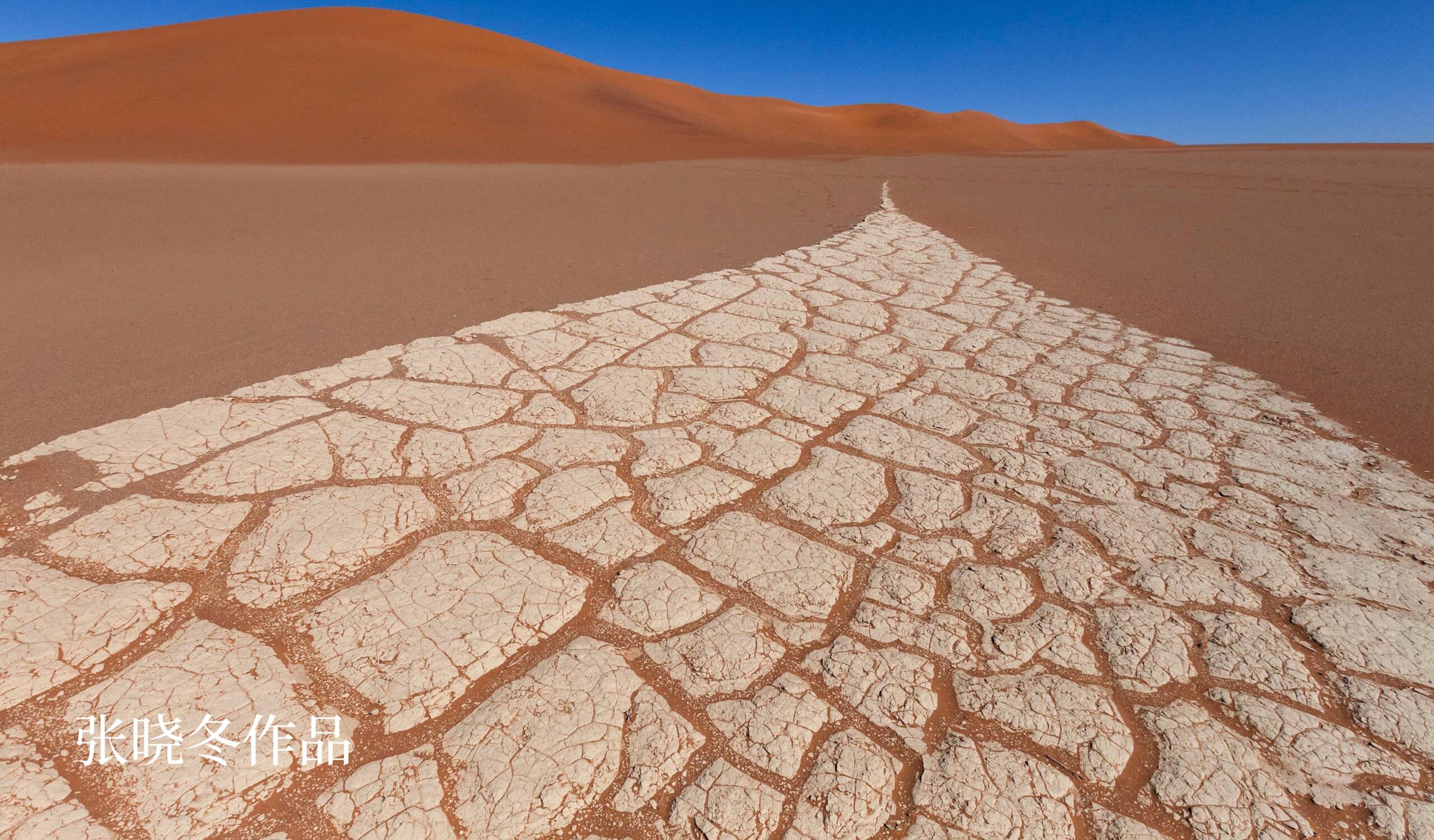
2017年我乘车从首都出发,12天后抵达鲸湾,途中经过埃托沙国家公园保护区,近距离拍摄斑马,大象,花背豺狼、犀牛、长颈羚、狮子、金钱豹和长颈鹿等,住宿在封闭的营里却被帐篷外的动物骚扰,魂飞魄散。
进入持续干旱至少8千万年的世界最古老沙漠“纳米布沙漠”,爬上45号沙丘享受被夕阳包裹住的感觉。奇美造型风格各异的沙丘婉约、硬朗、娇媚,呈红褐色,夕阳下似片片金箔覆盖沙面。
“死亡谷”就在其附近,寸草不生,枯死的骆驼荆棘树保持着垂死挣扎的状态。大约下午4点左右,我一个人轻轻走在干枯的地面上,避免踩碎美好的图案,不时远望色彩变化,不经意间看到这令人热血沸腾的画面,于是拍下这副我一生最难忘的画面。
梦是人的潜意识,大部分梦几乎无法还原,快乐和悲痛随着梦醒逝去。为留住美梦,我以视觉作品来还原他们,愿我们在无边宇宙的梦中无忧地活着。
In 2017, I set off from the capital and arrived at Walvis Bay after 12 days, passing through the Etosha National Park. There, I had close encounters with zebras, elephants, spotted hyenas, rhinos, giraffes, lions, leopards, and more. I stayed in a closed camp, but the animals outside the tent disturbed my peace, leaving me shaken.
Entering the Namib Desert, the oldest desert in the world, which has been arid for at least 80 million years, I climbed Dune 45 and enjoyed the feeling of being enveloped by the sunset. The dunes, with their unique and diverse shapes, were elegant, rugged, and charming, appearing reddish-brown and resembling sheets of gold leaf under the evening sun.
Nearby was the “Valley of Death,” a place where nothing grows, and the dead camel thorn trees remain in a state of desperate struggle. Around 4 PM, I walked gently on the parched ground, careful not to crush the beautiful patterns beneath my feet. Occasionally, I gazed into the distance, captivated by the changing colors, and inadvertently captured this exhilarating scene, which became one of the most unforgettable moments of my life.
Dreams are a manifestation of the human subconscious, and most dreams are nearly impossible to recreate; joy and sorrow fade with the awakening. To preserve beautiful dreams, I reconstruct them through visual art, hoping that we can live freely and joyfully in the dreams of the boundless universe.
臺北的摩托車 Taipei: The World of Motorcycles
日志
臺北,摩托車的世界。臺北的摩托車之多在世界上數一數二,而臺北摩托車秩序井然也稱得上為世界最好,沒有之一。當我站在臺北任意一條街口等交通燈是,數十輛、上百輛摩托車風馳電掣般地瞬間從眼前閃過,遇到上下班這個場景更為壯觀,幾百兩摩托車彙集在路口等候交通燈,嘟嘟嘟的發動機聲如同一部巨大的機器在待機。一天早晨,我專門去了三重方向進臺北的主要通道路口拍攝摩托車,端著相機站在高處拍下摩托車在路面等候的壯觀場景。摩托車群望不到頭,車手們佩戴頭盔,沒有人交談,人們靜靜地注視前方。那一刻仿佛空氣凝固了,摩托車的世界在這裡體現。
臺北摩托車給遊客的印象是速度快、秩序好、場面大,車手遵守規則是重要因素,可是為了使車手遵守規則,管理機構在路面為摩托車清晰畫線,標明行駛和停車位置。就那停車來講,在任何便於停車的街道兩旁,管理機構盡可能地為摩托車畫出停車位置,解除停車後顧之憂。我很少看到街上不按規則亂停車的現象。
深圳路面看不到摩托車,因為跟北京、上海和廣州一樣禁摩(全面禁止摩托車在城市限定道路行駛),這樣做據說是考慮到摩托車帶來的廢氣排放問題、道路安全問題和人身安全問題。過去廣州、深圳和一些城市頻繁發生歹徒騎摩托車搶劫,的確危害人身和財產安全,摩托車交通事故率比較高。可是深圳禁摩後無數電動車不受任何約束在路面疾駛,電動車手不需駕駛牌照,電動車行駛也沒有以前摩托車行駛的規範制約,導致交通事故發生比例遠遠高於摩托車,管理機構開始禁電(除特許,電動車不得上路)。如果想要騎摩托,便要去沒有禁摩的周邊二線三線城市。西安禁摩多年後,最近重新允許摩托車上路,於是,很多人購買摩托車做交通工具,而更多的摩托車愛好者因為這個政策開始購買大排量摩托車過癮。可是,摩托車管理規則依然沒有改進,摩托車在路面行駛的安全性依然沒有保證。
越南胡志明市摩托車雖然沒有臺北的多,可是在上下班高峰期也稱得上壯觀,與臺北的不同在於,摩托車行駛和停放沒有規矩。在臺北,如此的摩托車海在紅燈亮時所有摩托車線上外嘎然而止,我沒有任何擔心地走過斑馬線,而在胡志明市的任何一條街我都不敢這樣走過斑馬線,因為即便有紅燈,照樣會有摩托車竄出來嚇你一跳。雖然車手技術嫺熟,不至於撞到我,可是從我作為行人的角度看,這種道路管理絕對沒有安全可言。
我一直在思考為何臺北如此多的摩托車可以這樣毫無問題地繼續增多,如果道路資源有限,私家車數量無法毫無限制地增加時,公共交通是否可以為市民帶來便利。毫無疑問,答案是肯定的,公車畢竟不能將乘客輸送到城市任何角落,在這種狀況下,市民如何選擇交通工具。就這幾個城市發展看,臺北做出典範,在公車作為城市主要交通工具的前提下,市民大多數選擇摩托車,而非私家車,因為私家車開支、維護和停車等都比摩托車沒有優勢。如果管理機構在規則和便利方面預先設計好所有環節,那麼可能大多數人願意選擇摩托車,因為它非常方便。那些把摩托車作為喜愛的車手更加不會把私家車最為行駛首選。
香港的摩托車很少,停車應該是制約它發展的主要問題。置於說騎摩托車不安全的說法,應該可以成立,狹窄的街道、密集的行人和急行的車流,對於車手來講各種不安全因素香港都具備了。管理機構並沒有因此禁摩,而是增加車手取得摩托車駕駛證的難度,從而強化駕駛技術和安全意識。
我喜歡摩托車,出去拍攝時,如果駕駛證被認可,我一定會租摩托車而非私家車出行,它為攝影帶來的便利很多,特別是停車方便。喜愛摩托車,是因為它的機械操作性、那種人車一體的感覺,那種從小就具有的騎馬、騎單車的駕馭感。如果從喜愛駕駛摩托車的角度看此事,我跟很多人一樣失去選擇的權力,無論是香港、深圳,還是北京和西安,如果想過癮,還想保證安全,臺北應該是唯一一個選擇,因為這裡時摩托車的世界。
發表於臺灣《夢享志》2019年
Taipei boasts one of the highest numbers of motorcycles in the world, and its motorcycle order can be considered the best globally—without exception. When I stand at any street corner in Taipei waiting for the traffic light, dozens, even hundreds, of motorcycles rush by in a flash. During rush hour, the scene is even more spectacular, with hundreds of motorcycles gathering at intersections, the sound of their engines humming like a huge machine on standby. One morning, I specifically went to a major intersection leading into Taipei from the direction of Sanchong to photograph motorcycles. Standing high above with my camera, I captured the magnificent sight of motorcycles waiting on the road. The sea of bikes seemed endless, with riders wearing helmets, no one talking, all silently gazing ahead. In that moment, it was as if the air had solidified, embodying the world of motorcycles.
The impression that Taipei’s motorcycles leave on visitors is one of speed, order, and grandeur. The adherence to rules by riders is a crucial factor, and to ensure compliance, regulatory bodies have clearly marked lanes and parking spots for motorcycles on the roads. Regarding parking, management has made efforts to delineate parking spaces along any street where it is convenient, alleviating concerns about improper parking. I rarely see instances of motorcycles parked improperly on the streets.
In contrast, motorcycles are absent from Shenzhen’s roads due to a ban similar to those in Beijing, Shanghai, and Guangzhou, which prohibits motorcycles from operating on designated urban roads. This measure is said to address concerns over emissions, road safety, and personal safety. In the past, cities like Guangzhou and Shenzhen frequently experienced robberies committed by individuals on motorcycles, which indeed posed risks to personal and property safety, as the accident rate for motorcycles is relatively high. However, after the ban in Shenzhen, countless electric vehicles began to speed through the streets without restrictions. Electric vehicle riders do not require a driving license, and their operation lacks the regulatory guidelines that previously governed motorcycles, leading to a significantly higher rate of accidents. Consequently, management began to impose bans on electric vehicles (with exceptions). If one wishes to ride a motorcycle, they must go to second- or third-tier cities where there is no motorcycle ban. After years of prohibition, Xi’an recently allowed motorcycles back on the roads, resulting in many purchasing motorcycles for transportation, while more motorcycle enthusiasts began to buy larger displacement bikes to indulge. However, motorcycle management regulations have not improved, and the safety of riding motorcycles on the roads remains unguaranteed.
In Ho Chi Minh City, while there are fewer motorcycles than in Taipei, the spectacle during rush hours is still impressive. The difference lies in the lack of rules governing motorcycle operation and parking. In Taipei, at a red light, all motorcycles come to a stop in their designated lanes; I can cross the pedestrian crossing without worry. Conversely, on any street in Ho Chi Minh City, I would hesitate to cross because, even with a red light, motorcycles still dart out unexpectedly. Although the riders are skilled enough not to hit me, from a pedestrian’s perspective, this kind of road management is certainly unsafe.
I have often pondered why Taipei can accommodate so many motorcycles without issue. If road resources are limited and the number of private cars cannot increase indefinitely, can public transport provide convenience for citizens? Undoubtedly, the answer is affirmative; buses cannot reach every corner of the city. In this situation, how do citizens choose their modes of transport? Analyzing the development of several cities, Taipei serves as a model. With buses as the primary means of urban transport, most citizens choose motorcycles over private cars, as the costs, maintenance, and parking for private cars do not offer advantages over motorcycles. If regulatory bodies pre-design all aspects regarding rules and convenience, it is likely that most people would prefer motorcycles due to their convenience. Those who are passionate about motorcycles are even less likely to consider private cars as their primary choice.
Motorcycles are scarce in Hong Kong, and parking issues are likely the main constraint on their development. The notion that riding motorcycles is unsafe is valid; narrow streets, dense pedestrian traffic, and fast-moving vehicles create various safety risks for riders. However, the management has not banned motorcycles; instead, they have made it more challenging to obtain a motorcycle license, thereby enhancing riding skills and safety awareness.
I enjoy motorcycles. When I go out to photograph, if my driving license is recognized, I would definitely rent a motorcycle instead of a car for the convenience it brings, especially in terms of parking. My love for motorcycles stems from their mechanical operation, the sense of unity between rider and machine, and that innate feeling of control reminiscent of riding horses or bicycles. From the perspective of a motorcycle enthusiast, like many others, I find myself losing the power of choice. Whether in Hong Kong, Shenzhen, Beijing, or Xi’an, if one wishes to enjoy riding while ensuring safety, Taipei should be the only option, as it is truly the world of motorcycles.
Published in Taiwan’s Dream Sharing Journal, 2019.
不时想起摩洛哥的西瓜I occasionally think of the watermelons from Morocco
日志

摩洛哥值得去一次,因为它的文化融合了法国、西班牙和阿拉伯元素。受过良好教育的人讲法语、阿拉伯语和英语,行为举止非常得体,家中摆设欧化,感觉随意舒适。这一点在我几年前从西班牙南部的Algeciras坐船到摩洛哥的丹尼尔后再往南走的旅程中已经感受到, 拉巴特和卡萨布兰卡的摩洛哥人与马拉喀什、舍夫沙万的各不相同。 撒哈拉沙漠地区大部分人只讲柏柏尔语和阿拉伯语。 这一次是从西班牙巴萨罗那飞拉巴特,去马拉喀什进梅尔卡祖附近的撒哈拉沙漠,最后去菲斯、舍夫沙万,从丹尼尔到西班牙
TRIFA。


因为摄影的缘故,去当地人文需要更加细致地观察,发现其文化中最吸引我的和打动我的部分。遗憾的是第一次拍摄便遇到几次被路人直接禁止的警告。伊斯兰国家拍摄的禁忌我了解,所以画面中避免直接表现人,特别是女性。摩洛哥首都拉巴特和卡萨蓝卡相对容易拍摄,只要不是正面对人拍摄,很少有人介意,马拉喀什和梅尔卡祖随意拍,大家知道我是摄影师有时候还主动让我拍摄。而菲斯和舍夫沙万就困难多了,人们会用警惕的眼光望着我的一举一动。一天下午,我行走在舍夫沙万的石板街上寻找计划中的场景,在一处低矮民房转角停着一辆手推车,上面装饰得非常艳丽,车子后面的墙是大面积海蓝色,这是舍夫沙万的特色,全程都是蓝色。这个画面的色彩吸引了我,我上前仔细看看,原来是买小吃的推车,三面周被橙色帆布遮盖,正面留有二个方形的口,像民居的门,车架上装饰了各种鲜花。没人在车子旁边。当我拍完几张还机位时,从民房里走出来一位中年男子,看到我带着相机便我们是否拍了车子。我回答是的,他要求我删除车子的照片。他看起来没有不友善,但是也谈不上礼貌。删完给他看,我就问他为啥不能拍,他看我一眼说拍摄带走了他的灵魂。当天回到民宿跟老板聊起这件事,他说有些人可以把万物都当做灵魂,游客不能带走,所以你拍什么都不妥。他的话得到验证,在菲斯老城里,拍摄老城门洞,远处一群人在聚集,镜头里只能看到背影。当拍摄完成后,一中年男人告诉我不能拍摄,他没让我删除就离开了。我感到莫名其妙,同时有些沮丧,不知老城那里可以拍哪里不可以拍。不过在拉巴特、马拉喀什和梅尔卡祖却不是这样,当车停在撒哈拉沙漠里公路旁时,一处深井旁正巧围着一群骆驼,主人从井里取水饮骆驼。我问司机能否拍摄骆驼和主人,他说你尽情拍。我还是不太放心,要他问主人。他们讲阿拉伯语,主人就招呼我走近一些。他让我随便拍,说这口井最少有50米深,饮完着群骆驼需要最少一小时。我赶忙换了镜头近距离拍摄主人和骆驼。







摩洛哥文化谈不上神秘,可是地域差异比较大。南部人直率,而北部人特别是菲斯和舍夫沙万的含蓄,也许是因为北部商业化程度高的缘故,善于与人斗智。菲斯老城的男孩给我留下不好的印象,我称他们为带路党。当我在巷子里寻找画面感觉时,他们会像幽灵一样突然横在面前,他们以为我在找路,接着便缠着我为我带路。在我意识到进入圈套时,便欲摆脱他,可是他却像香口胶似的粘着我,走哪儿跟哪儿。 他索要20欧元,在我准备报警时,他说5欧元就可以了。在被骗过5欧元后我开始对摩洛哥所有要求带路的孩子拒绝。找成年人问路大部分都没问题,只是几乎没人可以讲清楚英文,他们讲阿拉伯语和法语,我只能凭着手势和方向判定。老城里手机信号不好,手机导航失效,有时手机导航会让我走冤枉路。后来买了地图,拍摄前先大致研究好地图,标注重要路口,再问成年路人就基本不会迷路了。

马拉喀什的广场值得游玩,那里有数不尽的小吃,夜晚各种说唱、游戏、食物令人目不暇接,它就是非洲乃至世界上最繁忙的广场之一的贾马夫纳广场。出了广场,我步行返回民宿,这样可以看到晚上的市民生活状态。走过一个西瓜摊,摊主刚刚切开一只硕大的西瓜,一种固有的西瓜香气顿时拉我回到童年。我爸工作单位每年夏天都要分配几次西瓜,一只西瓜比篮球还大,有的是二个篮球的尺寸。只要分西瓜,我们都要全家出动,使用各种方式把西瓜搬进百米之外的家里。总是有西瓜掉在地上开裂后散发的特有香气,让我无法控制大口大口吞噬西瓜的冲动。气味的记忆带我来到遥远的北非内陆,此时西瓜的香味驻足。我要买一个回民宿享用,大口大口地吞噬。可是这里的西瓜竟然跟冬瓜一样,超过三个篮球那么大,我一个人无法搬动。摊主讲什么我听不懂,从他手势判断估计是让我买刚切开的西瓜。可是半丫西瓜还是很大,我比划着只要一小块。他切下1/4,用塑料袋兜上递给我。问他多少钱,他用计算器按下数字,我合计着人民币1.8元。取出2个迪拉姆给他,他却不收,我以为算错了。他抱起一只西瓜,按下那个数字,告诉我整只西瓜2个迪拉姆。我惊呆了,这么大个西瓜才1.8元人民啊,算起来差不多7分钱一斤,也许不是太准,可是有啥重要的呢?整一列火车把这里西瓜运我国该多好啊。我还是要给他2个迪拉姆,他笑着拒绝了,意思是送我吃。拎着西瓜回到民宿,一口气吃完那块1/4沙瓢西瓜,甜滋滋的,嘴边沾满黏黏的西瓜瓤,我想着摩洛哥人真好,小小的一丫西瓜没什么,可是甜满的我这个中国人的心。后来每次回想起老城里孩子的带路党不愉快的事,这个西瓜摊主的形象便占据我思维的制高点。



菲斯民宿的老板拉尔夫英语很好,他在美国读设计专业,毕业后回到摩洛哥办了民宿,可是他依然是职业设计师。他除了为很多民宿设计,还与摩洛哥最大的马赛克工厂合作,为他们设计产品。他每年去中国,广州、宁波、深圳都有合作者。在他美轮美奂的民宿(Riad)请我喝过下午茶,他开车带我去马赛克工厂,一座二层建筑,一楼是橄榄石窑炉和作坊,二楼是展厅,各种马赛克手工作品值得购买和收藏。晚上拉尔夫为我安排了摩洛哥特有的SPA,原来他在菲斯有二个Riad民宿。为了我们新建的友谊,他为我SPA收费打8折。离我住的民宿步行5分钟便是他有SPA服务的Riad,门铃响过后,一位体态丰腴的女人迎宾。拉尔夫介绍了我给这位SPA师。她带我上二楼来到一间鼻腔里充满清新精油味的房间。拉尔夫离开后,SPA师让我换上棉质短裤,带我下楼进入地下洗浴。原以为她会离开,迟疑中,她看出我的疑虑,解释道摩洛哥的SPA是需要SPA师帮助洗浴的,即热石洗浴。不容我多想,她让我躺在一层黑色石头上,背部顿时被那种温暖覆盖。她说需要至少15分钟。 我躺在那里热着,她就准备调试热水和其他洗浴用品,各种精油瓶子和毛巾擦子。时间到了,我坐在热石上,她开始为我洗浴。她穿着一条短裙,遮不住硕大臀部,上身穿一件吊带,橙色灯光下吊带在我眼前晃来晃去,我尽量不去多想。她用不同的精油擦拭,从头到脚,让我想起小时候公共澡堂里的搓澡。没想到她竟然搓出这么多脏东西,她用水冲洗干净,再次搓,每一遍擦拭完都要水洗干净。地下室里湿热,汗水稀里哗啦地流。她取了水等我喝完继续擦拭冲水,几遍之后结束。离开蒸笼一般的洗浴室,探出头的瞬间,我顿时有一种重生的感觉,身子像风轻得欲飞翔。当我再到二楼躺在SPA床上时,她也换上另一套衣服,依然短裙吊带。屋里点着芬香的蜡烛,耳边传来缠绵的法语歌。她一边以娴熟的手法为我按摩,一边聊起她的事。她与拉尔夫是中学同学,拉尔夫从美国回来后邀请她在这里开设热石SPA。那时她已经考取了政府颁发的SPA师牌照,一直以来生意非常好。不过,因为有个5岁的女儿,所以她坚持预约,不耽误抚养女儿的时间。她说摩洛哥是伊斯兰教国家,她本人也是教徒,可是与其他国家不同的是这里更加开放包容。她不需要像这里的阿拉伯人那样带面纱,她可以做想做的事。既然是开放和包容,那我就直接问她为客人SPA洗浴会不会对她骚扰,她说有过,但是不多,住在这里的客人层次比较高。有一次是美国人,洗浴时那人开始动手动脚,当警告终止服务时他依然不收敛,所以她选择报警。那个美国人自己觉得丢人,当晚就带着行李离开这家民宿。她认为能住在这里的客人都是善良的。至于穿着短裙和吊带,她说你已经感受到了,洗浴室湿热,她身材比较胖,在工作场所穿着没有更多择。



在摩洛哥旅行拍摄,英语只能在酒店、部分民宿和机场使用,阿拉伯语和法语畅通无阻。与摩洛哥阿拉伯人比较难以沟通,而与摩洛哥人(也许是混合了的柏柏尔人、法国人、西班牙人),不过我的确无法判断他们属于哪一种人。我只能凭着观察他们对我的善意程度判断是否能与他们沟通、交流和拍摄。我总结的经验是,如果拍摄时他们没有避开或显示不自然,那么完全有可能在拍完更他们打招呼或者聊天,这一点取决于他们能否讲英语或西班牙语,实际上这二种语言大部分人都不会讲。
舍夫沙万为誉为蓝色之城,从高处望去,看似一个蓝色湖泊。阳光射在小巷子里的蓝色和白色墙面上映出行人和物体,恰好构成一幅幅完美画面。我尽可能地避开人物正面拍摄,可是当遇到一位遛鸟的摩洛哥阿拉伯老人时,他却让我不知所措。

从一条巷子出来,迎面就是一面墙,一位须老人身着阿拉伯白色长袍坐在小凳子上打盹。早晨的阳光和煦温暖,伴着墙上挂的几只鸟笼里传出的鸟叫声,他看起来睡得很深。在摩洛哥拍摄,我没有带中长焦头,仅用35毫米和50毫米镜头。为了避免被惊醒他,被他发现我在拍他和鸟(我当时想起来拍车子时的场景),我轻轻地走近离开只有不到2米的距离迅速拍完转身准备离开。背后他突然的说话吓了我一跳,心里想着会不会被他因为我拍走了他的灵魂而要我删除照片。我惊恐地望着他,他说着什么我不明白,但是从他慈祥的眼神中感觉到他的友好而非不乐意。在我站在原地不知所措时,他走过来握住我的手,依然说着我不懂的话,然后拉我走近鸟笼,他坐下,比划着,那个意思是让我拍,使劲拍。我僵硬地笑了笑,尝试拍了几张,他冲着我笑着。在确认了这样友好的状况时,我便稀里哗啦地拍了他的肖像还有他的鸟。末了,他起身与我握手告别,继续闭目养神。回到舍夫沙万民宿,不解地问老板这是啥情况,他也不能解释。他说大部分摩洛哥阿拉伯人不愿意被拍,特别是老人。
这是真是一个神奇的国家,对这里的人我无法通过几次旅行和拍摄或者与不同的人聊天了解真实的他们。越是如此,我好奇心越重,就越会接触更多的人,没有感觉厌烦。可是有一样东西却让我不能回想。摩洛哥有各种佳肴美味,大部分餐厅的菜单由几道摩洛哥菜和 地中海菜系组成,一般是法语和阿拉伯语,少有英语,我只见过一个菜单是中文、法文和英文的,那是一家舍夫沙万的中餐馆。在大城市餐馆,前菜多为明虾、沙拉,主食摩洛哥特色小羊肉小米饭、通心粉,而小城市或镇子只有塔吉(tagine),土豆泥,炸羊肉丸子等。去撒哈拉沙漠的一路,顿顿塔吉,以至于后来见到塔吉就想吐。事实上,摩洛哥塔吉是塔吉锅上放入鸡肉、洋葱、蕃茄、葡萄干、香菜和摩洛哥红花加入胡椒粉、郁金香粉、匈牙利红椒粉和肉桂焖在一起,有些像我们的火锅,属于比较健康的吃法。回国后的一段时间,我绝对不碰火锅可能与塔吉有关系。
在摩洛哥旅行最好自驾或自由行,尽量不参加旅行团。慢板的生活节奏,各种历史沉积的老城、手工制品和各色人物都需要花费时间仔细品味,在不懂法语和阿拉伯语时最好能下载软件用于跟当地人交流,这样的旅行才充满乐趣。我喜欢住民宿,就是当地特色的Riad,但是一定要花时间甄别找到干净的,店员可以讲英语的,最好是那种设计感很强充满艺术氛围的Riad。旅行拍摄中与当地人交流或交集总是给我留下深刻印象,那些开心的不开心的事情天天发生,我总是把事件记录下来当做我作品的素材,如此可以更好地回味及认识社会。


发表于香港《潮游》杂志2018
Morocco is worth visiting because its culture blends French, Spanish, and Arab elements. Educated people speak French, Arabic, and English, and behave very politely. Their homes have European-style decorations and feel casual and comfortable. I sensed this during my journey a few years ago when I took a ferry from Algeciras in southern Spain to the Moroccan town of Tangier and then traveled south. The Moroccans in Rabat and Casablanca are quite different from those in Marrakech and Chefchaouen. Most people in the Sahara Desert region speak only Berber and Arabic.
This time, I flew from Barcelona, Spain, to Rabat, then traveled to Marrakech near Merzouga in the Sahara Desert, and finally went to Fes and Chefchaouen before returning to Spain.
Due to photography, I needed to observe the local culture more carefully to discover the most captivating and moving aspects. Unfortunately, during my first shoot, I received several warnings prohibiting photography from passersby. I understand the taboos of photographing in Islamic countries, so I avoided directly portraying people, especially women. In Morocco’s capital, Rabat, and Casablanca, it’s relatively easy to take photos as long as you don’t shoot people directly; few people mind. In Marrakech and Merzouga, people were casual about it, and sometimes they even encouraged me to take photos when they realized I was a photographer. However, it was much more challenging in Fes and Chefchaouen, where people would watch my every move with suspicion.
One afternoon, while walking on the cobblestone streets of Chefchaouen looking for planned scenes, I came across a colorful food cart parked at a low corner of a house. The wall behind it was painted a large area of the signature blue of Chefchaouen. This color attracted me, so I approached to take a closer look. It turned out to be a snack cart, covered with orange canvas on three sides, leaving two square openings at the front resembling a house door. The cart was decorated with various flowers, and there was no one beside it. After I took a few shots, a middle-aged man came out of the house and asked if I had taken pictures of the cart. I replied that I had, and he requested that I delete the photos. He didn’t seem unfriendly, but neither was he polite. After deleting the photos for him, I asked why I couldn’t take pictures. He glanced at me and said that photographing took away his soul.
When I returned to my accommodation that day and mentioned this to the owner, he said that some people believe everything has a soul, and tourists shouldn’t take it away, so photographing anything is inappropriate. His words were validated in the old city of Fes, where while photographing an old city gate, a group of people gathered in the distance, and I could only see their backs in the frame. After I finished shooting, a middle-aged man told me I couldn’t take pictures. He didn’t make me delete the photos but just walked away. I felt confused and somewhat frustrated, unsure about where I could and couldn’t take photos in the old city. However, in Rabat, Marrakech, and Merzouga, it was different. When we stopped by the roadside in the Sahara Desert, a group of camels was gathered around a deep well, with their owner drawing water for them. I asked the driver if I could take pictures of the camels and their owner, and he said I could shoot as much as I wanted. Still not entirely at ease, I asked him to check with the owner. They spoke Arabic, and the owner invited me to come closer. He told me to take as many photos as I wanted, saying that the well was at least 50 meters deep and that it takes at least an hour for the camels to drink. I quickly changed lenses to take close-up shots of the owner and the camels.
Moroccan culture isn’t exactly mysterious, but there are significant regional differences. People in the south are straightforward, while those in the north, especially in Fes and Chefchaouen, are more reserved. This may be due to the higher level of commercialization in the north, making them adept at dealing with others. The boys in the old city of Fes left me with a bad impression, and I referred to them as “guides.” When I was searching for scenes in the alleys, they would suddenly appear like ghosts, thinking I was lost, and would then insist on showing me the way. When I realized I was being trapped, I tried to shake them off, but they stuck to me like chewing gum, following me wherever I went. They demanded 20 euros, and when I threatened to call the police, he said 5 euros would suffice. After being scammed for 5 euros, I started to refuse all the kids in Morocco who offered to guide me. Asking adults for directions was mostly fine, but almost no one spoke clear English; they spoke Arabic and French, so I had to rely on gestures and directions. The mobile signal in the old city was poor, and my phone navigation sometimes failed, leading me to unnecessary detours. Later, I bought a map and studied it roughly before shooting, marking important intersections, and asking adult passersby for directions, which helped me avoid getting lost.
The square in Marrakech is worth visiting, filled with countless snacks and vibrant activities at night, including various performances and games. It is one of the busiest squares in Africa and the world, known as Jemaa el-Fnaa. After leaving the square, I walked back to my accommodation, allowing me to observe the city’s nighttime life.
I passed by a watermelon stand where the vendor had just cut open a huge watermelon. The inherent fragrance of the watermelon instantly transported me back to my childhood. Every summer, my father’s workplace would distribute large watermelons—some even bigger than basketballs. Whenever there was a watermelon distribution, our whole family would mobilize to transport it home, often from a hundred meters away. Watermelons would occasionally drop and crack open, releasing their unique aroma, making it impossible for me to resist devouring them.
The smell took me far away to North Africa, and I wanted to buy one to enjoy back at my accommodation, eating it in big bites. However, the watermelons here were enormous, larger than three basketballs, and I couldn’t carry one by myself. I couldn’t understand what the vendor was saying, but from his gestures, I gathered he wanted me to buy the freshly cut watermelon. Even a quarter of it was still quite large, so I gestured that I only wanted a small piece. He cut off a quarter, wrapped it in a plastic bag, and handed it to me. When I asked him how much it cost, he used a calculator to show me a number, which I calculated to be about 1.8 RMB.
I took out 2 dirhams to give him, but he refused to accept it. I thought I must have miscalculated. He picked up a whole watermelon, pressed the same number on the calculator, and told me the entire watermelon was 2 dirhams. I was stunned—such a large watermelon for just 1.8 RMB! That’s about 7 cents per pound! I couldn’t help but think how wonderful it would be if a whole train could transport these watermelons back to China.
I still insisted on giving him 2 dirhams, but he smiled and declined, implying it was a gift for me. Carrying the watermelon back to my accommodation, I devoured that quarter in one go; it was sweet and juicy, leaving my lips sticky with pulp. I thought to myself how kind the Moroccans are. A small piece of watermelon didn’t mean much, but it filled my heart as a Chinese person with sweetness. Later, whenever I recalled the unpleasant experience with the children who tried to guide me in the old city, the image of that watermelon vendor occupied a cherished place in my thoughts.
Ralph, the owner of a guesthouse in Fes, has excellent English skills. He studied design in the United States and returned to Morocco to run his guesthouse, but he remains a professional designer. In addition to designing many guesthouses, he collaborates with Morocco’s largest mosaic factory to create products. He travels to China every year, working with partners in Guangzhou, Ningbo, and Shenzhen.
During my stay at his beautiful Riad, he treated me to afternoon tea and took me to the mosaic factory, a two-story building with an olive stone furnace and workshop on the first floor and a showroom on the second, showcasing various handmade mosaic artworks worth purchasing and collecting. That evening, Ralph arranged for me to experience a unique Moroccan spa treatment at one of his two Riads. To celebrate our newfound friendship, he offered me a discount on the spa service.
Just a five-minute walk from my guesthouse, I arrived at the Riad offering spa services, where a plump woman greeted me after I rang the bell. Ralph introduced me to the spa therapist, who led me upstairs to a room filled with the refreshing scent of essential oils. After Ralph left, the therapist asked me to change into cotton shorts and took me downstairs to the bathing area.
I initially thought she would leave, but sensing my hesitation, she explained that Moroccan spa treatments require assistance from the therapist, specifically for hot stone baths. She instructed me to lie on a black stone slab, and warmth enveloped my back. She mentioned that it would take at least 15 minutes to prepare the hot water and other bathing products.
As I lay there, she adjusted the water and gathered various essential oil bottles and towels. When the time was up, she began my wash, applying different essential oils from head to toe, reminding me of childhood experiences in public bathhouses. To my surprise, she was able to scrub away quite a bit of dirt. After rinsing me off, she repeated the process several times. The basement was hot and humid, with sweat pouring down.
She offered me water and continued the treatment, and after several rounds, we finished. Upon exiting the steamy bathing area, I felt an overwhelming sense of renewal, as if I could float. When I returned upstairs to the massage table, she had changed into another outfit, still in a short skirt and tank top. The room was lit with fragrant candles, and soft French songs played in the background.
As she skillfully massaged me, we chatted about her life. She and Ralph were classmates in high school, and after he returned from the U.S., he invited her to establish the hot stone spa. By then, she had already obtained a government-issued spa therapist license and had a thriving business. However, due to her five-year-old daughter, she insisted on making appointments to not interfere with her parenting.
She mentioned that Morocco is an Islamic country, and while she is a believer, the culture here is more open and accepting than in other countries. She does not have to wear a veil like some Arab women and is free to do as she wishes. When I asked about any potential harassment from clients during spa treatments, she admitted there had been some instances, but they were few, as guests at this establishment are generally of a higher caliber.
She recounted an incident with an American guest who became inappropriate during his treatment. When she warned him and ended the service, he continued to misbehave, prompting her to call the police. The American, feeling embarrassed, left the guesthouse that same night. She believes that the guests who stay here are kind-hearted. As for her choice of attire, she explained that given the humid and warm conditions in the bathing area and her fuller figure, she had little choice in what to wear while working.
When traveling and shooting in Morocco, English is mainly usable in hotels, some guesthouses, and at the airport, while Arabic and French are widely spoken. Communication with Moroccan Arabs can be quite challenging, and I often find it difficult to distinguish between the local people, who may be a mix of Berbers, French, and Spanish. I rely on observing their friendliness to gauge whether I can communicate, interact, and take photos.
From my experience, if people do not avoid me or appear uncomfortable while I’m shooting, there’s a good chance I can greet them or chat after taking their picture. However, this often depends on whether they speak English or Spanish, as most people do not.
Chefchaouen, known as the “Blue City,” looks like a blue lake from above. The sunlight reflects off the blue and white walls in the narrow alleys, creating perfect scenes with passersby and objects. I try to avoid photographing people head-on, but I found myself at a loss when I encountered an elderly Moroccan Arab man walking his birds.
Exiting a narrow alley, I came face to face with a wall where an elderly man in a white Arab robe sat on a small stool, dozing. The morning sun was warm and gentle, accompanied by the chirping of birds from the cages hanging on the wall. He seemed to be in a deep sleep. While shooting in Morocco, I only had my 35mm and 50mm lenses with me, as I hadn’t brought a medium telephoto lens. To avoid waking him or being noticed while photographing him and the birds (which reminded me of a previous moment capturing cars), I quietly approached to within about two meters, took a quick shot, and turned to leave.
Suddenly, he spoke, startling me. I wondered if he would want me to delete the photo, fearing I had captured his soul. His words were incomprehensible to me, but his kind eyes conveyed friendliness rather than displeasure. As I stood there, unsure, he came over, took my hand, and continued speaking in a language I didn’t understand. He then gestured for me to come closer to the birdcage, sitting down and encouraging me to take more photos. I managed a stiff smile and snapped a few shots while he smiled back at me.
Feeling reassured by his friendliness, I took several portraits of him and his birds. When we finished, he stood up, shook my hand in farewell, and returned to his rest. Back at the guesthouse in Chefchaouen, I asked the owner about the encounter, but he couldn’t explain it either. He noted that most Moroccan Arabs, especially the elderly, are generally reluctant to be photographed.
Morocco is indeed a magical country, and I find it difficult to truly understand its people through just a few trips and conversations. This only deepens my curiosity, driving me to engage with more locals without feeling fatigued. However, one thing I struggled to recall was the cuisine. Morocco offers a variety of delicious dishes, with most restaurant menus showcasing a mix of Moroccan and Mediterranean cuisine, usually in French and Arabic, with few options in English. I only encountered one menu in a Chefchaouen Chinese restaurant that featured Chinese, French, and English.
In larger city restaurants, appetizers often included shrimp and salads, while main dishes typically featured Moroccan specialties like lamb with couscous or pasta. In smaller towns, options were limited to tagine, mashed potatoes, and fried meatballs. Throughout my journey to the Sahara Desert, I had tagine at every meal, to the point where just the sight of it made me feel nauseous.
Traditional Moroccan tagine is a dish cooked in a tagine pot, combining chicken, onions, tomatoes, raisins, cilantro, and Moroccan saffron with spices like pepper, turmeric, paprika, and cinnamon, similar to a hot pot, and generally a healthier way to eat. After returning home, I avoided hot pot for quite some time, possibly due to my overexposure to tagine.
Traveling in Morocco is best done by self-driving or independently, avoiding group tours. The slow pace of life, the historical layers of old towns, handmade crafts, and diverse characters all require time to appreciate. Without knowledge of French or Arabic, it’s advisable to download translation apps to communicate with locals, which makes the journey much more enjoyable. I prefer staying in guesthouses, particularly local Riad-style accommodations, but it’s essential to take the time to find clean places where the staff can speak English, ideally those with strong design and artistic ambiance.
Interacting with locals during my travels always leaves a profound impression on me; happy and unhappy moments occur daily, and I record these events as material for my work, allowing me to reflect on and better understand society.
Published in Hong Kong’s “Chaoyou” magazine in 2018.




